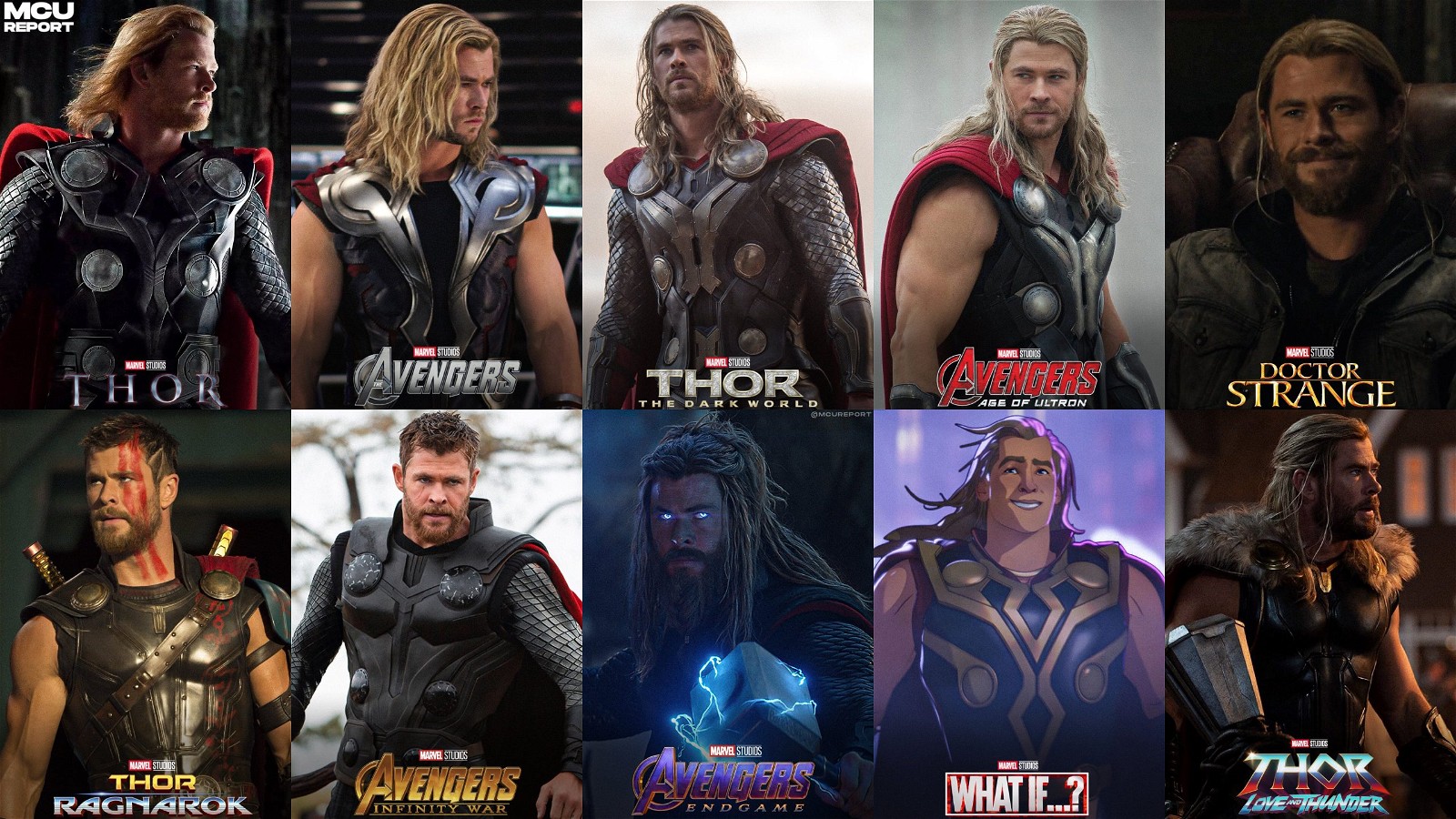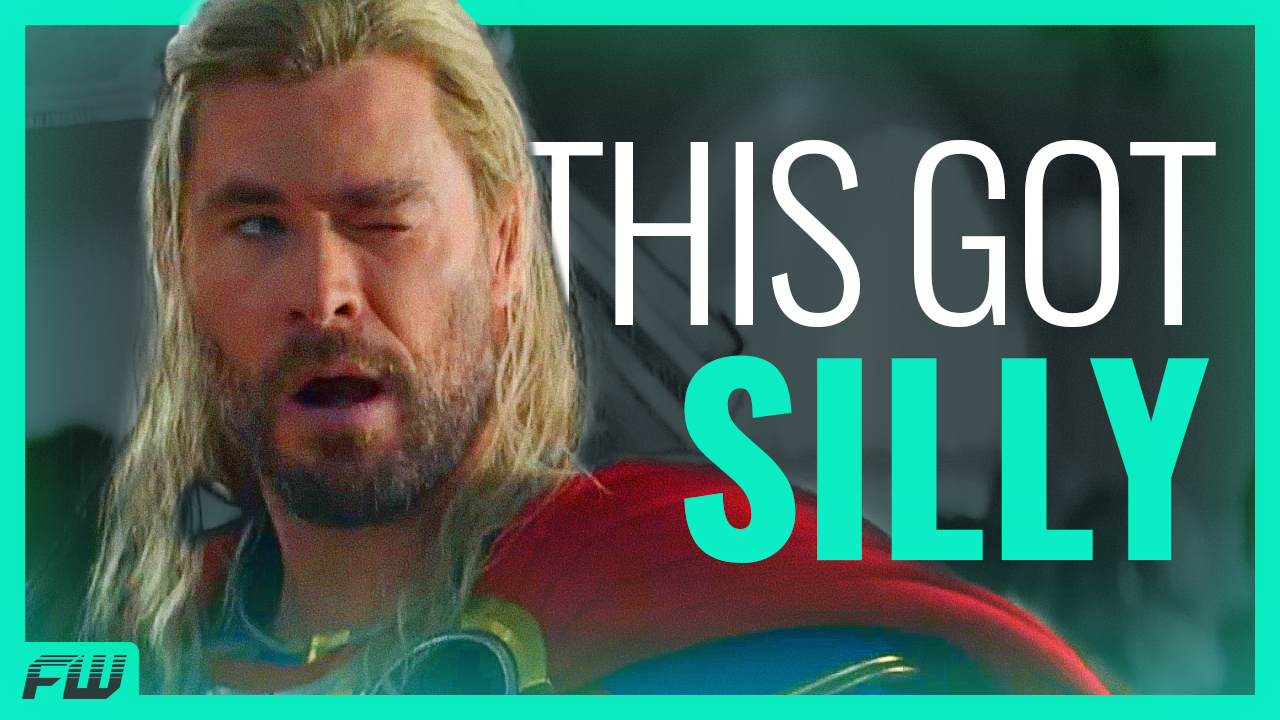FandomWire‘s latest video essay explores the strange evolution of Thor in the MCU.
Check out the video below:
Subscribe & hit the Notification Bell so you never miss a video!
Evolution of Thor

If you asked anyone which of the superheroes in the Marvel Cinematic Universe would be the first to get four solo films, no one probably would have answered with Thor. And yet, here we are with Thor: Love and Thunder, the fourth entry in a series that has had a strange progression since its inception.
But how did we reach this point where the God of Thunder has gotten so many chances to save the world? He’s hardly the most popular character, and while his movies consistently make their money back, they aren’t as lucrative as some of the other solo outings.
Perhaps Marvel sees that the Thor property can be something special, and they want to take the time to ensure they get it right.
The first Thor was met with a generally mixed reception. It has a 57 on Metacritic — one of the few films in the series with a yellow score on the service. However, this was early in the series’s progression — before it had found the formula by which the rest of the franchise would be made. The MCU would later define what comic book movies would become, but this definition was still being formed when Thor came out.
The first Thor film was directed by Kenneth Branagh, whose directorial efforts up to that point were primarily Shakespeare adaptations. In fact, Thor would be Branagh’s first in a string of mainstream studio films he would make, his subsequent films being Jack Ryan: Shadow Recruit, Cinderella, and Murder on the Orient Express.
Branagh would bring his experience directing these highbrow literary adaptations to make Thor. After all, the character is based on Norse mythology, so it makes sense that an adaptation of the property would be very literary. Branagh’s biggest investment in the film was getting the audience immersed in the world of Asgard, both visually and narratively, setting the foundation for future installments.
From a visual standpoint, the defining characteristic of Thor was an abundance of Dutch angles. Although that is hardly anything spectacular compared to what is being done in the MCU now — like the horror-inspired Multiverse of Madness or the Wuxia-inspired Shang-Chi — it was distinctive in a time when we’d only seen the rather visually plain Iron Man movies and The Incredible Hulk. Thor was the first film in the MCU that had its own style.
Then, two years later, the sequel, Thor: The Dark World, would become one of the most maligned MCU movies to date. Even the most hardcore fans of the series struggle to defend what is one of the dullest, grayest films that have been made in the series yet.
Part of the struggle with the film is arguably its choice of director. Replacing Kenneth Branagh was Alan Taylor, best known for directing some of the best episodes of HBO’s hit fantasy series Game of Thrones. And while moving from one of the most epic fantasy shows of all time to a Thor movie that is itself heavily influenced by the fantasy genre might have seemed like a natural transition, Taylor seemed to learn all the wrong lessons from his tenure on Game of Thrones.
Indeed, the poor direction of The Dark World caused it to have a bland and forgettable villain and some of the least exciting action sequences in any Marvel movie to date. The only redeeming factor of the film is Loki’s storyline, with some fans even saying that this works much better as a Loki movie than a Thor movie.
So after The Dark World was panned by critics and fans alike — at least by MCU standards — it only made sense that there would be a massive course correction. Enter New Zealand director Taika Waititi who was best known then for making cult-favorite comedies like What We Do in the Shadows and Hunt for the Wilderpeople. His radically different direction saved a series that seemed past the point of salvation.
The single most significant change that Waititi made to the Thor property was infusing it with a sense of color and humor. The first two Thor films had mainly been serious affairs, with a bit of obligatory comedic relief, but the third entry, Thor: Ragnarok, was a very humorous, tongue-in-cheek film.
Whereas the first two films were set primarily on Earth and Asgard, Ragnarok became more of an intergalactic adventure for the God of Thunder and gang. It seems likely that the filmmakers were trying to capitalize on the popularity of the Guardians of the Galaxy movies, as Ragnarok would take on a very similar lighthearted yet heartfelt tone.
Like the Guardians films, Thor: Ragnarok would also heavily depend on its soundtrack to create its atmosphere. Heavily featured in the film’s marketing was Led Zeppelin’s “Immigrant Song,” which would become a song that fans would associate with the movie for years to come. Although the soundtrack isn’t as iconic as the Awesome Mixes, it was still a big part of the film’s success.
The film also swung for the fences with its villains compared to previous Thor outings. Casting Academy Award-winning actress Cate Blanchett as Thor’s sister, Hela, was a bold choice and one that paid off as Blanchett gave a wildly memorable performance in the role.
And to add even further to the silliness factor was Jeff Goldblum’s secondary antagonist, The Grandmaster. Goldblum plays the role outlandishly in a way that only he could. While Grandmaster might not be the most consequential of villains from the Marvel Cinematic Universe, Goldblum ensures that he’s at least not forgettable.
So if you check the scorecard after Ragnarok, there have been two pretty straight-faced Thor movies that weren’t received well and one more lighthearted one that was beloved by fans and critics. Of course, Marvel would bring back Waititi to direct the fourth entry in the series — Thor: Love and Thunder.
But Waititi wasn’t content with just redoing the humorous tone of Ragnarok in Love and Thunder. Instead, he opted for an approach that blended some of the darker elements from the first two movies with the humor that was so well-received from Ragnarok. The result? It was met with a mostly warm, if somewhat indifferent reception, earning a 66% critic score and 78% audience score on Rotten Tomatoes.
Although those are hardly bad scores, it’s obviously not the enthusiastic reception the filmmakers were hoping for. Given that The Dark World has an equivalent critic score and a 75% audience score, the film didn’t go over as well as it could have. But why is that?
Some of the reception can probably be attributed to the idea that too much of a good thing is bad. Many described Love and Thunder as “Ragnarok redux” or even “Ragnarok lite.” But doing so discounts the delicate balancing act that Waititi managed to pull off gracefully.
Yes, for the most part, the film keeps the same lighthearted, goofy tone from Ragnarok, with lots of joking pop culture references. One recurring gag that split fans made fun of the decade-old screaming goats meme. It’s ridiculous, just as any movie about a hammer-wielding, cape-wearing superhero should be.
And a decision that feels almost ironic given how much their films inspired the success of Ragnarok, the Guardians of the Galaxy would make a brief appearance in Love and Thunder. But their brief and humorous presence in the film’s introduction was an excellent indicator of what fans could expect from the film’s tone.
But then, on the other hand, there is a much darker, somber edge to this film as well. And the humor spread throughout really wears down the viewer’s defenses so that the emotional aspects of the storyline will have a substantial emotional impact.
The cold open of Love and Thunder is undoubtedly one of the darkest and bleakest things that has been done in the MCU so far. Watching Gorr’s daughter die of starvation may not be the most visually disturbing thing, but it’s undoubtedly at least unsettling to see such a young child suffering so terribly.
This sequence establishes Gorr in a very compelling way and makes him one of the most interesting villains in the MCU. Although he is undeniably sadistic, and therefore the audience certainly isn’t rooting for him, he’s a morally complex villain — something missing from the Thor franchise up to this point.
The action sequences in Love and Thunder are also significantly more interesting than anything done in the previous films. The action was without a doubt the weakest aspect of Ragnarok, as it primarily took a backseat to the comedy, but for Love and Thunder, Waititi takes care to show that he can direct action exceptionally well.
The clear best scene in the film is the one set in the Shadow Realm. Shot in crisp, beautiful black-and-white with lots of contrast, the film is more visually innovative than most of the action from the rest of the franchise. The choreography is simple but effective, allowing the visual style to carry the weight. Waititi effectively reclaims the criticisms levied against the Thor franchise that it is too gray by making a scene that is purposefully devoid of color.
The blend of tones in Thor: Love and Thunder has largely been divisive, but it’s precisely what the Thor franchise should have been in the first place. Much like the titular Norse god superhero, the franchise has struggled with a bit of an identity crisis and has just now found its way. Hopefully, this will continue into the fifth installment of the series — and perhaps the conclusion of the TRUE Thor trilogy that began with Ragnarok.
What did you think of the evolution of Thor in Thor: Love and Thunder? Is it a natural progression of the series’s style, or is it just an attempt to recapture lighting in a bottle? Let us know in the comment section below.
Follow us for more entertainment coverage on Facebook, Twitter, Instagram, and YouTube.

